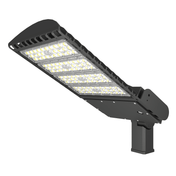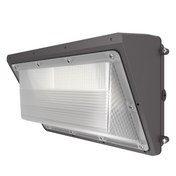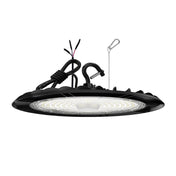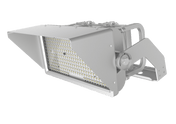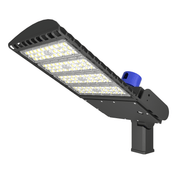As global energy demand surges—with China's August 2025 electricity consumption hitting 1.0154 trillion kWh, a 5% year-on-year increase—outdoor lighting has become a critical focus for both cost reduction and security enhancement. Traditional lighting solutions like halogen or fluorescent fixtures are rapidly being phased out, replaced by advanced LED area lights that deliver superior brightness, longer lifespans, and significant energy savings. This guide breaks down the top considerations for selecting LED area lights in 2025 and highlights the key product categories shaping the market.
5 Critical Dimensions for Evaluating 2025 LED Area Lights
1. Lumen Output & Optical Design
Security-focused outdoor lighting requires precise lumen calibration—too little light creates blind spots, while excessive brightness causes glare. For residential applications, 1,500-3,000 lumens suffices for driveways and patios, while commercial parking lots and industrial yards demand 10,000-20,000 lumens. The latest LED models feature advanced optical lenses with adjustable beam angles (15°-120°) and uniform light distribution, eliminating hotspots. For example, a 15,000-lumen
LED area light with a 60° beam angle can effectively cover 2,000 square feet without wasted illumination.
2. Energy Efficiency & Regulatory Compliance
The 2025 market prioritizes fixtures with efficacy ratings exceeding 130 lumens per watt (lm/W), far surpassing the 80 lm/W of older LED models. Look for products certified under the updated ENERGY STAR 2025 standards, which mandate 20% higher efficiency than previous benchmarks. A medium-sized warehouse replacing 50 traditional 400W metal halide lights with 150W LED equivalents (140 lm/W) would cut annual energy costs by approximately $12,000, based on $0.15/kWh electricity rates. Additionally, dimmable and motion-sensor-enabled models can reduce energy usage by 30-50% by activating full brightness only when motion is detected.
3. Smart Technology Integration
AI-powered features have become standard in premium 2025 models. These include: Adaptive motion sensing with 360° coverage and 50-foot detection rangeIntegration with IoT platforms (via Matter protocol) for remote control through smartphones or voice assistantsData analytics that track usage patterns and generate maintenance alertsColor temperature adjustment (2700K-6500K) to match ambient conditions mart city initiatives are driving demand for networked LED systems that sync with surveillance cameras and alarm systems, creating cohesive security ecosystems.
4. Durability & Environmental Resistance
Outdoor fixtures must withstand extreme weather conditions. The 2025 lineup features IP67/IP68 waterproof ratings (submersible up to 1.5 meters) and -40°C to 65°C operating temperature ranges. Materials like die-cast aluminum housings and tempered glass lenses provide corrosion resistance, while advanced heat dissipation designs extend LED lifespans to 100,000 hours—reducing replacement cycles from 2-3 years to 7-10 years.
5. Installation & Maintenance
Modern LED area lights simplify installation with universal mounting brackets compatible with poles, walls, and ceilings. Wireless models eliminate wiring costs, while tool-less access panels facilitate bulb replacement. According to 2025 installation best practices, fixtures should be mounted 15-20 feet high for optimal coverage, with surge protection devices installed to prevent electrical damage. Manufacturers now offer 5-10 year warranties, significantly lowering lifecycle costs.
Top LED Area Light Categories for 2025
|
Category
|
Key Specifications
|
Ideal Applications
|
Price Range
|
|
Residential Smart Floodlight
|
2,000-5,000 lumens, 120-240V, IP65, AI motion sensor
|
Driveways, backyards, entryways
|
$80-$150
|
|
Commercial Parking Lot Light
|
10,000-15,000 lumens, 120-277V, IP67, dimmable
|
Retail parking, office complexes
|
$250-$450
|
|
Industrial High-Bay LED
|
15,000-20,000 lumens, 347-480V, IP68, 10-year warranty
|
Warehouses, manufacturing facilities
|
$500-$800
|
Future Trends Shaping 2025 and Beyond
The LED lighting market is projected to reach $53.57 billion in 2025, with smart lighting solutions growing at 19.2% annually. Upcoming innovations include solar-integrated models with battery storage (eliminating grid dependency) and LiDAR-enhanced motion detection for improved accuracy. As municipalities accelerate smart city deployments, networked LED systems will become integral to adaptive traffic management and public safety networks.
Investing in 2025's advanced LED area lights delivers dual returns: enhanced security through intelligent illumination and substantial energy savings. By focusing on the five critical dimensions outlined above, consumers and businesses can select fixtures that balance performance, durability, and cost-effectiveness—creating safer, more sustainable outdoor environments.




